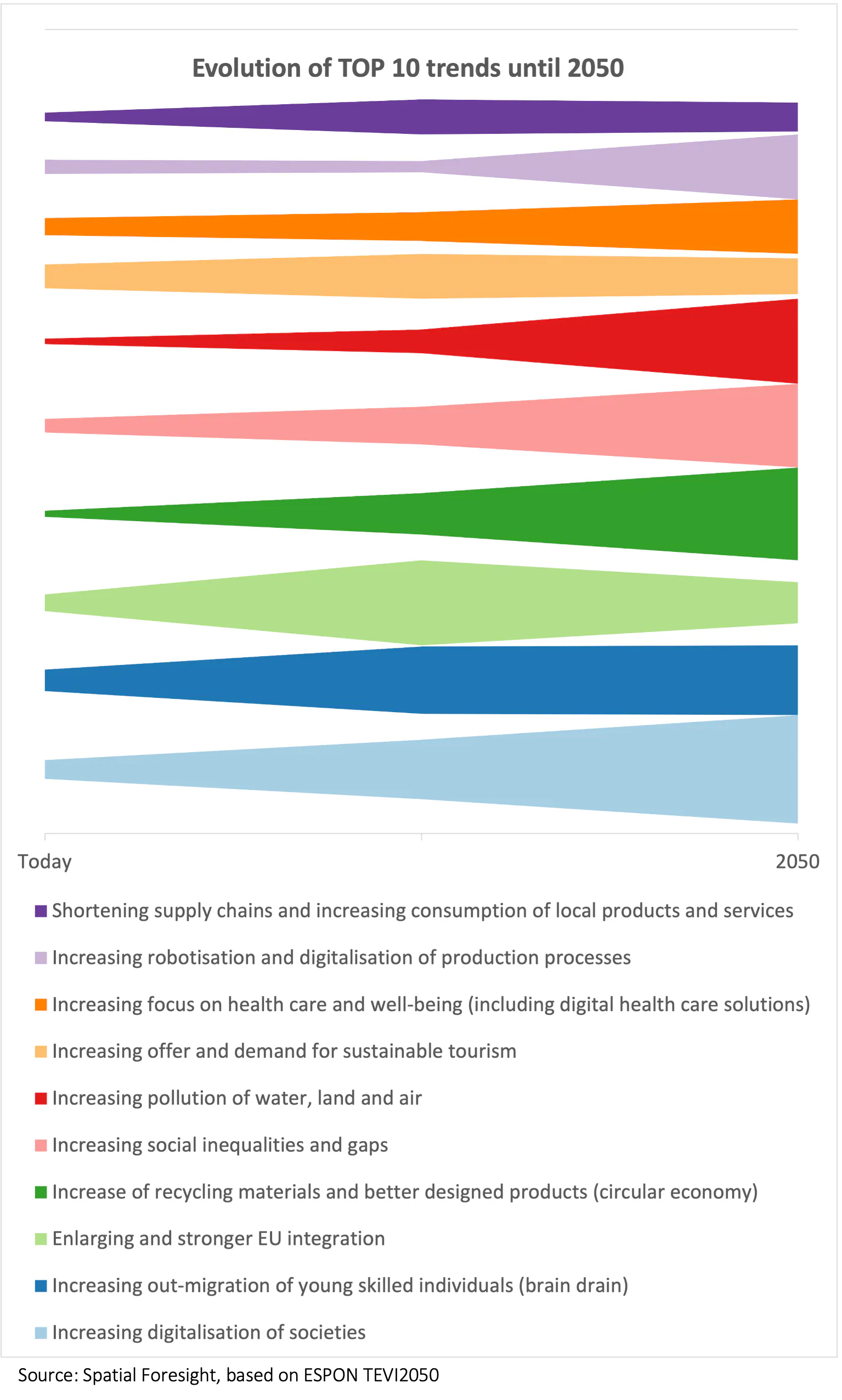Trends affecting territorial development in the Danube, Adriatic & Ionian region
February 2022
A multitude of social, technological, economic, environmental and political trends frame local and regional development perspectives. This ranges from global mega trends, such as climate change, to local micro trends.
Developing scenarios for 2050, the ESPON project TEVI2050 (Si apre in una nuova finestra)looked into key trends for the Danube and Adriatic Ionian Macro-regions. In a co-creative process including workshops with stakeholders from the area and a large online survey, information on a host of trends, their development over time and territorial impacts has been collected. The work reveals the enormous diversity with which trends affect different parts and types of territories in the Danube and Adriatic Ionian Macro-regions.
The ten trends considered by the stakeholder in the region to affect territorial development most in the coming decades provide a glimpse of the territorial diversity. The selection of trends is interesting as it in parts deviates from mainstream discussions at European level. It shows that which trends we expect to shape our local and regional development is strongly affected by where in Europe we are and what places we have in mind. In other words, places matter to trend discussions.
In the context of the Danube and Adriatic Ionian Macro-regions trends in the fields of digitalisation, social disparities & migration as well as EU integration are perceived as more decisive for framing the medium-term future than e.g. climate change (see the figure below).

To read this post you'll need to become a member. Members help us fund our work to ensure we can stick around long-term.
See our plans (Si apre in una nuova finestra)
Sei già un affiliato? Accedi (Si apre in una nuova finestra)


